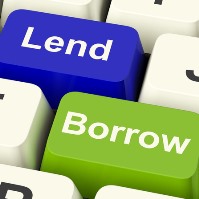In the last decade, household debt has decelerated quite significantly — down from an average rate of 10% each year in the early 2000s to just 2% at the end of 2013.[1] As a nation, it seems we’ve become far more conscious about our spending and borrowing habits since the Global Financial Crisis. 
Cutting back on unnecessary debt is a good thing. But ‘good’ debt can be an excellent tool for building wealth and a financially secure future. Let’s look at how to avoid the bad stuff — and get more of the good.
Cutting out the bad
The kind of debt you want to steer clear of is unsecured debt — in other words, a loan that isn’t backed by an asset that you could sell if you got into trouble paying your creditor back. An example could be using your credit card to pay for a holiday, a night on the town or (more sensibly) your electricity bill or car registration.
You should also try to avoid borrowing to buy depreciating assets, such as computers or cars. Of course, sometimes these items are a necessity, and if it’s a big purchase you mightn’t have the cash. But if you must borrow for these items, make sure to shop around for the best interest rate and have a payment plan that you stick to, to pay it off as quickly as you can.
Payday loans are another type of debt to avoid — while they may seem like a fast and convenient way to access cash, their interest rates can be crippling and can put you deeper in financial stress.
Getting more of the good
Bad debt saps your savings and costs you more in interest. Good debt, on the other hand, can be put to work to make you money. A classic example is borrowing to buy your home — which generally increases in value over time — or borrowing to buy business equipment, which helps to generate extra income.
As an investor, gearing (borrowing to purchase shares or property) can allow you to build an investment portfolio more quickly than if you just used your own money. This could potentially increase your earnings and your capital gains. What’s more, borrowing to invest is generally tax deductible, which can provide additional benefits.
Finally, as you get closer to retirement you could sell your investments then put the proceeds into your super, building your retirement nest egg and potentially paying less tax.
However, while gearing increases your potential to make money, it also multiplies your losses if your investments fall in value. It’s also important to have appropriate insurance in place when implementing a gearing strategy. Given the Australian tax system is complex and everyone’s tax situation is different, it’s important to seek professional advice before deciding whether a gearing strategy is right for you.
